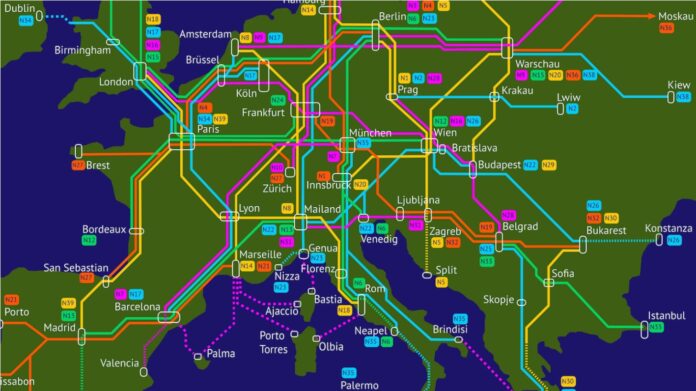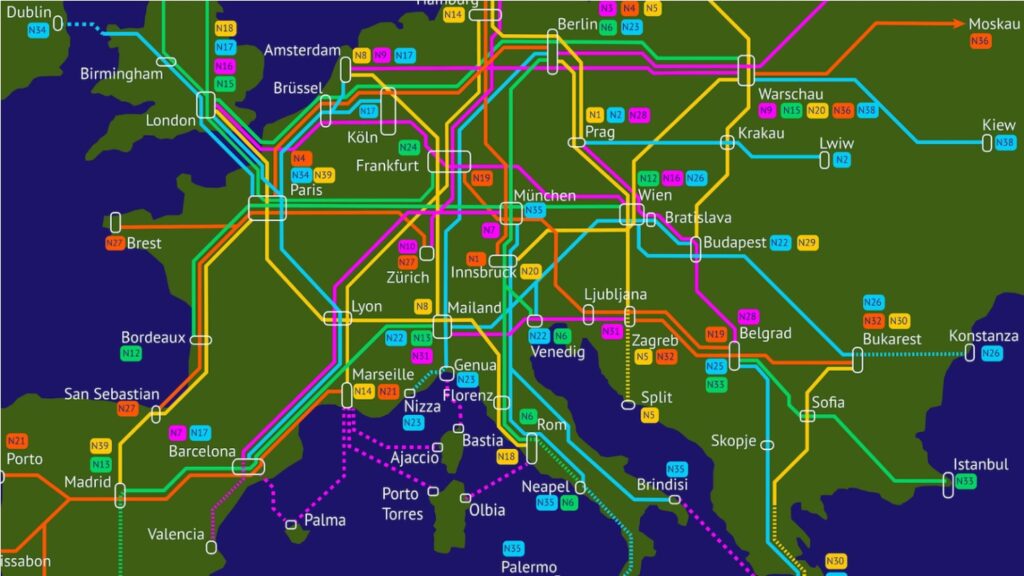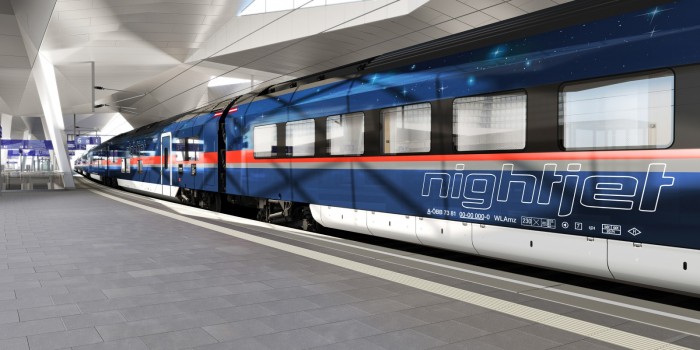
The proposal for a trans-European network of night trains. Let’s find out the characteristics of this project and what the benefits would be for European travelers.
The EURO NIGHT SPRINTER project: like a HIGH SPEED METRO between the cities of Europe
# A network of 40 international lines to connect 200 cities in Europe

The proposal to create a trans-European network of night trains came from the German Green Party during the last national elections. The goal is to create an efficient rail transport network for European citizens to reduce the use of cars and airplanes and consequently the emission of C02 on the continent. The map was represented as a straight-line diagram in the style of Harry Beck’s iconic design for the London Underground, showing Europe as an ordered set of overnight connections and destinations for the next day.
Euro Night Sprinter, this is the name of the project, would have 40 international long-distance lines and would guarantee the connection between more than 200 cities and places throughout Europe, from Lisbon in the west to Moscow in the east and from Helsinki in the north to Malaga in the south.
Read also: THE TRANS-EUROP EXPRESS: the new night trains to go abroad
# The conditions necessary to carry out the project

The project would require joint work and agreement by all states and European institutions. In fact, at the moment it is still a sketchy idea. To make it happen it would be useful:
- a unified control and coordination system for the various European national railway networks, as requested by the European Railway Agency, along the lines of Eurocontrol, the continent’s air traffic agency;
- night trains that can travel comfortably and quietly across Europe at speeds between 200 and 250 km/h, with the necessary rolling stock upgrades to be financed with the European Investment Bank;
- a single, easy-to-use booking platform for purchasing international travel with a single ticket;
- investments in railway networks to update old ones and develop new ones;
- finally, to make train travel more competitive it would be necessary to put an end to tax breaks for airlines.
Source: Bigthink
FABIO MARCOMIN










